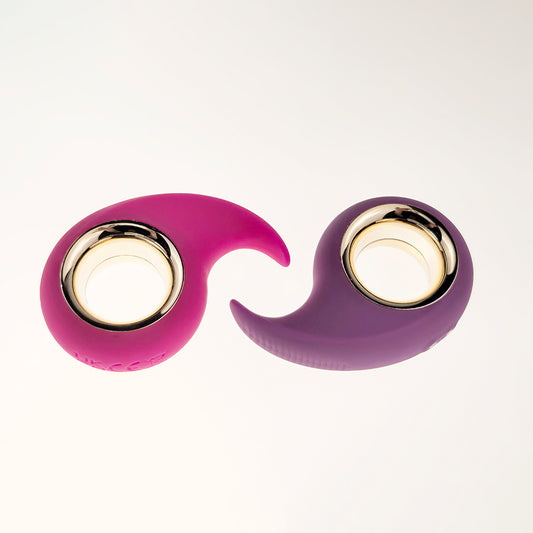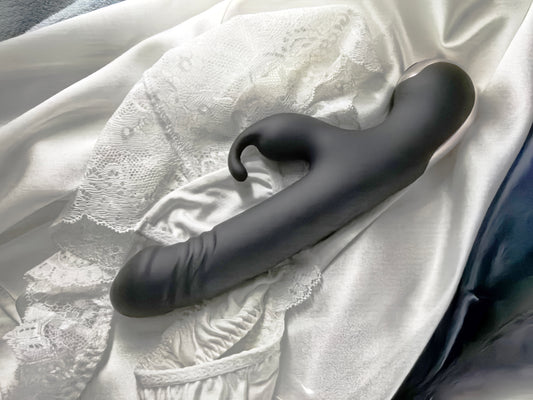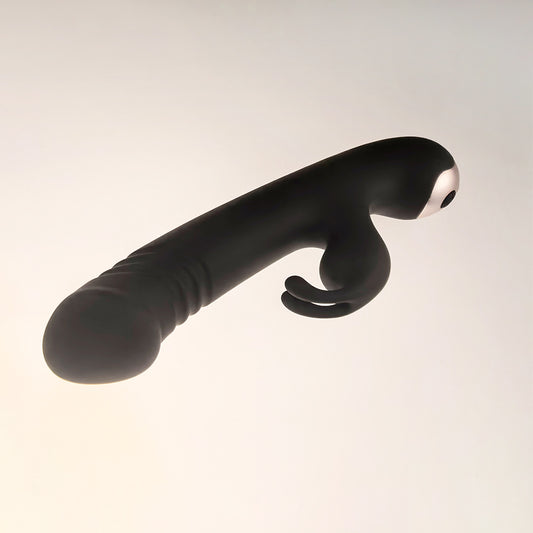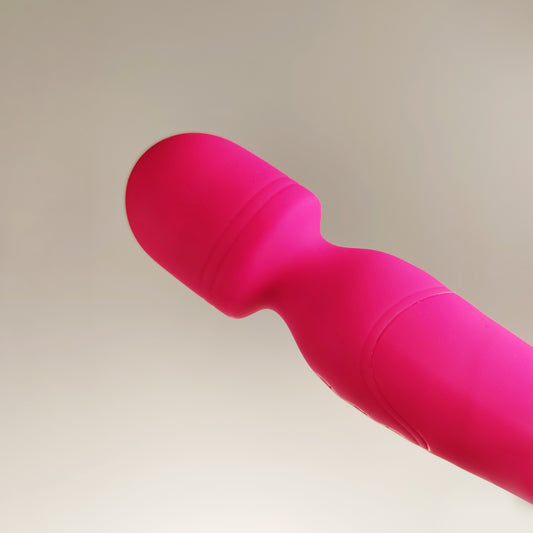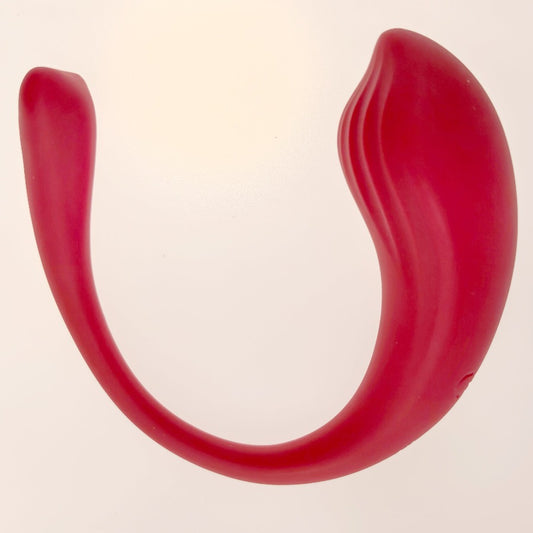
Extend Pleasure: Unlock the Power of Ejaculation Control
Share
Introduction:
In sexual intercourse, male physiological and psychological responses are intricately intertwined. Both factors play a crucial role in sexual arousal, the duration of arousal, and the final act of ejaculation. Understanding these mechanisms is key for women to help prolong male sexual performance, leading to increased satisfaction for both partners. This article explores male physiological responses, the sexual arousal mechanism, ejaculation processes, and how women can support their partners to extend sexual pleasure.
I. Male Physiological Responses and Sexual Arousal Mechanism
Male physiological responses during sexual activity are complex, involving a series of coordinated actions between different bodily systems. The sexual response cycle can generally be broken down into four stages: arousal, plateau (pre-orgasmic), orgasm, and resolution.
1.1 Arousal Phase: Sexual Desire Activation
Sexual arousal begins with external stimuli, such as visual, tactile, or auditory cues. Upon receiving such stimuli, the male nervous system begins to react. The activation of sexual desire is a multi-faceted physiological process that involves:
- Genital Response: The primary reaction is penile erection. During arousal, the nervous system releases chemicals such as nitric oxide, leading to the dilation of blood vessels, increased blood flow, and consequently, an erection.
- Heart Rate and Temperature: As arousal increases, heart rate rises, and body temperature increases due to the activation of the sympathetic nervous system, which prepares the body for heightened excitement.
- Breathing Rate: During sexual arousal, breathing becomes faster and shallower, another typical response as the body enters a heightened state of sexual excitement.
At this stage, the male body begins preparing for orgasm, but full sexual satisfaction has not yet been achieved.
1.2 Plateau Phase: Sexual Tension Builds
During the plateau phase, sexual arousal reaches its peak and stabilizes at a high level, continuing until orgasm. During this phase, male physiological responses become more intense:
- Penile Erection Intensifies: The penis becomes fully erect, with increased hardness and a reddish or purple hue due to greater blood flow.
- Prostate and Seminal Vesicle Secretion: The prostate begins secreting fluids in preparation for ejaculation. These fluids mix with sperm to form semen.
- Testicular Elevation: As arousal continues, the testicles ascend closer to the inguinal area, which is part of the body’s preparation for orgasm.
- Accumulation of Sexual Tension: Due to neural and hormonal activity, sexual tension continues to build, setting the stage for orgasm.
1.3 Orgasm Phase: The Start of Ejaculation
Orgasm is the climax of male sexual response and is marked by the beginning of ejaculation. This phase generally follows a two-step process:
-
Emission Phase: Semen is moved from the prostate and seminal vesicles into the urethra. The prostate and other muscles contract rhythmically, pushing the semen forward toward the penis.
-
Expulsion Phase: Semen is expelled from the penis through strong muscle contractions, leading to a powerful release and intense feelings of pleasure. The expulsion of semen is often accompanied by intense bodily sensations and psychological satisfaction.
-
Muscular Contractions and Pleasure: During ejaculation, the perineal, penile, and pelvic muscles contract intensely, releasing endorphins, oxytocin, and other “feel-good” hormones, which cause the male to experience profound pleasure and relaxation.
1.4 Resolution Phase
After ejaculation, the male enters the resolution phase, where the body gradually returns to its pre-aroused state. The penis softens, heart rate and breathing normalize, and the body begins to recover.
The duration of the resolution phase can vary, with some men requiring more time before they can achieve another erection, especially as they age or in the presence of physical or psychological challenges.
II. Ejaculation Mechanism: Control and Delay
Ejaculation is a complex physiological process involving multiple bodily systems, particularly the nervous and hormonal systems. Understanding this process is essential for controlling ejaculation and extending sexual pleasure.
2.1 Ejaculation Reflex and Control
Ejaculation is controlled by both the sympathetic and parasympathetic nervous systems.
- Sympathetic Nervous System: The sympathetic nervous system primarily governs the final stages of ejaculation, controlling the expulsion of semen. As orgasm nears, this system becomes more active, speeding up the ejaculation process.
- Parasympathetic Nervous System: The parasympathetic system is responsible for penile erection and maintaining sexual pleasure. When it is dominant, sexual excitement can be sustained, and ejaculation can be delayed.
To delay ejaculation, women can help by using various techniques to regulate these systems, such as changing rhythm, adjusting positions, or practicing specific breathing methods.
2.2 Techniques for Delaying Ejaculation
- Rhythm Control: By adjusting the rhythm, women can help men control ejaculation. For example, slowing down or speeding up movements, or pausing for short periods near orgasm, can effectively delay ejaculation.
- Position Adjustments: Certain sexual positions (such as the woman-on-top or side-by-side positions) can help reduce excessive stimulation, allowing men to last longer before reaching orgasm.
- Breathing and Muscle Relaxation: Practicing deep breathing exercises or synchronized breathing can help reduce tension and anxiety, allowing men to prolong sexual activity.
- Kegel Exercises: Strengthening the pelvic floor muscles through Kegel exercises allows men greater control over ejaculation and can help extend sexual performance.
III. Psychological Factors: Anxiety, Stress, and Emotional Support
In addition to physiological factors, psychological factors play a significant role in male sexual performance. Anxiety, stress, and emotional turmoil can contribute to premature ejaculation.
3.1 Psychological Impact on Ejaculation
- Performance Anxiety: Many men experience anxiety about their sexual performance, such as fears of not satisfying their partner or ejaculating too soon. These anxieties can cause them to ejaculate prematurely due to heightened excitement.
- Emotional Distress and Stress: Psychological stress can interfere with relaxation, causing premature ejaculation or difficulties in achieving orgasm. Negative emotions can prevent the male from fully enjoying the sexual experience, shortening the duration of intercourse.
3.2 Emotional Support and Relaxation Techniques
- Emotional Support: Women can help reduce performance anxiety by offering verbal encouragement and emotional reassurance, creating a relaxed, supportive environment for sexual activity.
- Psychological Relaxation: Techniques such as deep breathing, mindfulness, or meditative practices help men stay calm, reduce anxiety, and maintain a longer duration of sexual pleasure.
IV. The Role of Women in Prolonging Sexual Duration
Women play a crucial role in helping their partners delay ejaculation and enhance sexual satisfaction. By utilizing physiological techniques, such as rhythm adjustments, position changes, and synchronized breathing, as well as providing emotional support, women can guide their partners in maintaining sexual control.
These techniques help reduce anxiety and improve communication between partners, creating a deeper emotional connection and more fulfilling sexual experiences for both.
Conclusion
Understanding the physiological and psychological mechanisms behind male sexual responses, particularly ejaculation, is essential for women seeking to enhance sexual satisfaction and prolong intimacy. By applying techniques such as rhythm control, emotional support, and breathing exercises, women can assist their partners in delaying ejaculation, leading to more enjoyable and fulfilling sexual experiences. This collaborative effort between partners fosters deeper emotional bonds and improved sexual health.


